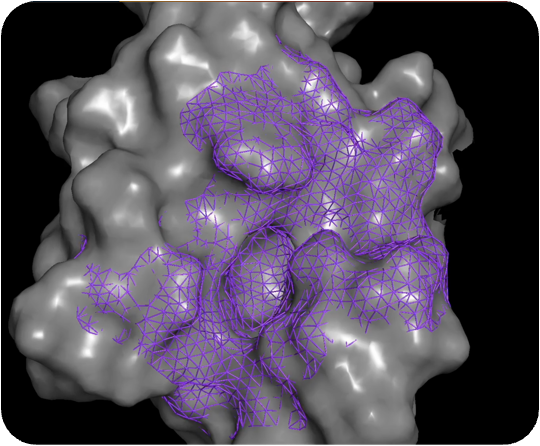This page was last changed on February 8, 2023, last checked on February 8, 2023 and applies to citizens and legal permanent residents of the United States.
1. Introduction
Our website, https://deepcure.ai (hereinafter: "the website") uses cookies and other related technologies (for convenience all technologies are referred to as "cookies"). Cookies are also placed by third parties we have engaged. In the document below we inform you about the use of cookies on our website.
2. Selling data to third parties
We do not sell data to third parties
3. What are cookies?
A cookie is a small simple file that is sent along with pages of this website and stored by your browser on the hard drive of your computer or another device. The information stored therein may be returned to our servers or to the servers of the relevant third parties during a subsequent visit.
4. What are scripts?
A script is a piece of program code that is used to make our website function properly and interactively. This code is executed on our server or on your device.
5. What is a web beacon?
A web beacon (or a pixel tag) is a small, invisible piece of text or image on a website that is used to monitor traffic on a website. In order to do this, various data about you is stored using web beacons.
6. Cookies
6.1 Technical or functional cookies
Some cookies ensure that certain parts of the website work properly and that your user preferences remain known. By placing functional cookies, we make it easier for you to visit our website. This way, you do not need to repeatedly enter the same information when visiting our website and, for example, the items remain in your shopping cart until you have paid. We may place these cookies without your consent.
6.2 Statistics cookies
We use statistics cookies to optimize the website experience for our users. With these statistics cookies we get insights in the usage of our website.
6.3 Marketing/Tracking cookies
Marketing/Tracking cookies are cookies or any other form of local storage, used to create user profiles to display advertising or to track the user on this website or across several websites for similar marketing purposes.
7. Placed cookies
LiteSpeed
Purpose pending investigation
LiteSpeed
Purpose pending investigation
Usage
We use LiteSpeed for website hosting. Read more
Sharing data
This data is not shared with third parties.
Elementor
Statistics (anonymous)
Elementor
Statistics (anonymous)
Usage
We use Elementor for content creation. Read more
Sharing data
This data is not shared with third parties.
Statistics (anonymous)
Name
Expiration
Function
Google Analytics
Statistics
Google Analytics
Statistics
Usage
We use Google Analytics for website statistics. Read more
Sharing data
For more information, please read the Google Analytics Privacy Statement.
Criteo
Functional, Purpose pending investigation
Criteo
Functional, Purpose pending investigation
Usage
We use Criteo for remarketing. Read more
Sharing data
For more information, please read the Criteo Privacy Statement.
Purpose pending investigation
Name
Expiration
Function
Name
Expiration
Function
Name
Expiration
Function
Google Fonts
Marketing
Google Fonts
Marketing
Usage
We use Google Fonts for display of webfonts. Read more
Sharing data
For more information, please read the Google Fonts Privacy Statement.
Google Maps
Marketing
Google Maps
Marketing
Usage
We use Google Maps for maps display. Read more
Sharing data
For more information, please read the Google Maps Privacy Statement.
Complianz
Functional
Complianz
Functional
Usage
We use Complianz for cookie consent management. Read more
Sharing data
This data is not shared with third parties. For more information, please read the Complianz Privacy Statement.
Functional
Name
Expiration
Function
Name
Expiration
Function
Name
Expiration
Function
Name
Expiration
Function
Name
Expiration
Function
Name
Expiration
Function
Name
Expiration
Function
Name
Expiration
Function
WordPress
Functional
WordPress
Functional
Usage
We use WordPress for website development. Read more
Sharing data
This data is not shared with third parties.
Miscellaneous
Purpose pending investigation
Miscellaneous
Purpose pending investigation
Usage
Sharing data
Sharing of data is pending investigation
Purpose pending investigation
Name
Expiration
Function
Name
Expiration
Function
Name
Expiration
Function
Name
Expiration
Function
Name
Expiration
Function
Name
Expiration
Function
Name
Expiration
Function
Name
Expiration
Function
8. Consent
When you visit our website for the first time, we will show you a pop-up with an explanation about cookies. You do have the right to opt-out and to object against the further use of non-functional cookies.
8.1 Manage your consent settings
You can also disable the use of cookies via your browser, but please note that our website may no longer work properly.
9. Your rights with respect to personal data
You have the following rights with respect to your personal data:
- you may submit a request for access to the data we process about you;
- you may object to the processing;
- you may request an overview, in a commonly used format, of the data we process about you;
- you may request correction or deletion of the data if it is incorrect or not or no longer relevant, or to ask to restrict the processing of the data.
To exercise these rights, please contact us. Please refer to the contact details at the bottom of this Cookie Policy. If you have a complaint about how we handle your data, we would like to hear from you.
10. Enabling/disabling and deleting cookies
You can use your internet browser to automatically or manually delete cookies. You can also specify that certain cookies may not be placed. Another option is to change the settings of your internet browser so that you receive a message each time a cookie is placed. For more information about these options, please refer to the instructions in the Help section of your browser.
11. Contact details
For questions and/or comments about our Cookie Policy and this statement, please contact us by using the following contact details:
DeepCure
100 City Hall Plaza, Boston, MA 02108
United States
Website: https://deepcure.ai
Email: info@deepcure.ai
Phone number: 8572091916
This Cookie Policy was synchronized with cookiedatabase.org on July 23, 2024



